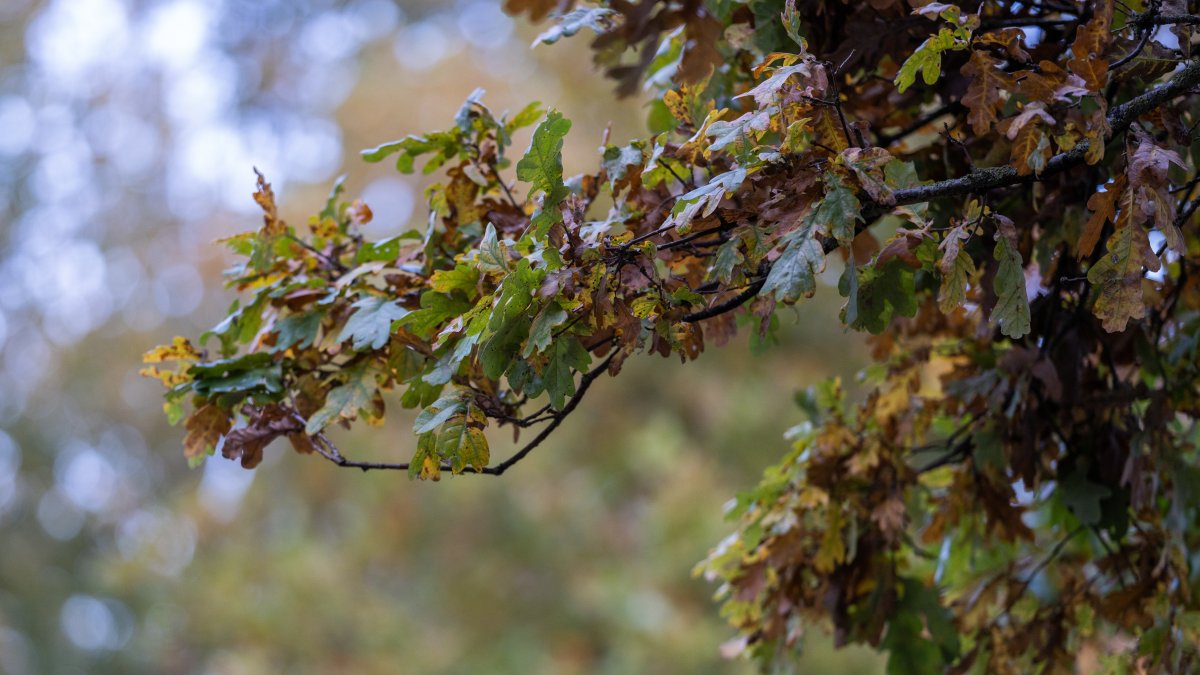While the great cicada emergence of 2024 may have ended, there’s one lingering impact that some in the Chicago area might notice: mites, some of which can lead to an itchy rash for those who are bitten.
According to cicada expert Dr. Gene Kritsky, a particular mite known as the “oak leaf itch mite” can be seen in large amounts following a cicada emergence — and this year appears to be no different.
Kritsky noted that in 2007, “people in Chicago who had oak trees in the yards, started to complain of bites after the cicada emergence.”
“It turned out that the oak itch mite was found in the egg nests of Brood XIII cicadas,” Kritsky told NBC Chicago in an email.
That same brood was one of the two to emerge in Illinois during 2024’s historic event, which Kritsky described as “biblical.”
“There are things I’ve seen this time that I’ve never seen before,” he said earlier this summer.
But while the massive emergence appears to have significantly declined, making way for the annual “dog day cicadas” now appearing across the region, it isn’t quite over yet.
For those who experienced large amounts of cicadas in this emergence, there are likely thousands of eggs still left to hatch.
The hatching takes place between six and 10 weeks after eggs are laid.
“The eggs hatch six to seven weeks [after they are laid], the nymphs fall to the ground and go into the soil, and the cycle begins again,” the Natural History museum said.
Trees in areas that saw large emergences could have as many as 40,000 eggs waiting to hatch, Kritsky added.
“People should avoid sitting under the trees until after the eggs hatch in mid-August,” he said.
What is the oak leaf itch mite?
According to researchers at Penn State, the mite first appeared in the U.S. in fall of 2004 in Kansas, with around 19,000 cases reported. Since then, it has spread to Illinois, Nebraska, Ohio, Oklahoma, Missouri and more.
“This mite can produce a pruritic (itchy) rash that is often erythematous (a redness of the skin) and papular (with small, raised, pimple-like bumps),” the university stated. “Although they have been reported to feed upon many different insects, it is when they have become very numerous, eliminating their current food source, that they will search for alternative hosts and inadvertently bite humans.”
The mites are described as being reddish-tan in color with shiny exoskeletons and for pairs of legs.
What to know about itch mite bites
According to researchers, the bites most often occur in late summer and fall, when the mite populations are often at their highest.
“Studies have shown that the mites can fall from trees in numbers of up to 370,000 per day,” Penn State reported. “They are also easily carried by the wind and can potentially enter through window screens and thereby bite people who do not often go outdoors. Most bites, however, occur to individuals gardening, especially those raking infested pin oak leaves in the fall.”
The Illinois Department of Public Health noted that mites typically require about four hours on someone’s body before biting.
How to know if you’ve been bitten by an oak leaf itch mite
According to IDPH, the bites resemble “red welts that look like chigger bites on your neck, face, arms and upper body.”
“These bites are not usually on legs where chigger bites may be found,” IDPH reported. “The itch mite welts form into a pimple-like lesion after about 12 hours. The bites are very itchy and can be present for up to two weeks.”

How can you treat mite bites?
Health officials say the most important thing is to avoid itching or scratching bites.
IDPH suggests over-the-counter topical anti-itch creams or oral anti-histamines can help control the itching, but if the itching grows too intense or it appears an infection has formed, officials urge you to contact a health care provider.
Can you prevent itch mites?
Controlling oak leaf itch mites can be tricky as many sprays don’t target the parts of trees where the mites develop.
“There are mixed results from the use of DEET (a mosquito and tick repellent),” Penn State reported. “People can best protect themselves by limiting their time from under infested trees and by immediately removing and laundering clothing and then showering.”
IDPH suggests the following tips for preventing bites:
- If you see brown and crusty edges on oak tree leaves, be aware that mite activity is possible. Don’t sit under oak trees or on nearby lawns.
- If you are in an area where itch mite associated rashes are occurring, or nearby oak trees have brown and crusty edges:
- When weather permits, keep windows shut from August through October when “mite-showers” can occur.
- Remove clothing items each day and launder them. Take a warm, soapy shower after coming indoors, especially after gardening, raking leaves or performing other outdoor activities.
What else to know about oak leaf itch mites
The good news is that oak leaf itch mites cannot survive inside your home.
“In order to survive, itch mites need to feed on insect larvae, which are usually found on the inside of tree leaves,” IDPH reported.
